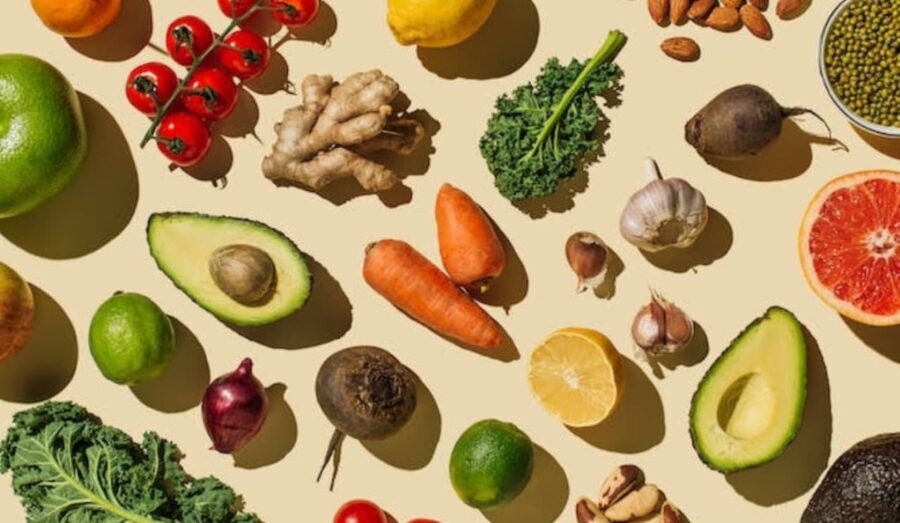
TB research shows a good diet can cut infections by nearly 50%
TB is the single most deadly infectious killer of humankind. New research shows food and proper nutrition work like a vaccine against the disease.

For centuries, we have known that tuberculosis is a social disease. It thrives on poverty and social factors such as malnutrition, poor housing, overcrowding, unsafe work environments and stigma.
Globally in 2021, an estimated 2.2 million cases of TB were attributable to undernourishment, 0.86 million to HIV infection, 0.74 million to alcohol use disorders, 0.69 million to smoking and 0.37 million to diabetes.
However, knowledge about social determinants alone does not always translate into tangible action and progress. A new trial in India called RATIONS, aimed to determine the effect of nutritional supplementation on new cases of tuberculosis in households of adults with pulmonary TB. The research found that providing food baskets to people with TB and their households could go a long way to prevent and mitigate the disease.
No easy silver bullets
The TB community has typically looked for biomedical solutions, or “silver bullets”, for a social pathology, and we are struggling to make progress.
Since the COVID pandemic, TB mortality and incidence have increased globally, putting TB back on top as the single most deadly infectious killer of humankind.
In 2021, 1.6 million people died of TB. In Africa, TB incidence is high (212 per 100,000 population) with a high case fatality rate because of the HIV epidemic.
Undernutrition is the most important cause of TB. This has been shown in studies in many countries, including South Africa, where researchers found poor levels of nutrition in patients admitted to a specialised TB hospital.
Malnutrition refers to all forms of deficiencies in nutrition, including over-nutrition and obesity. Undernutrition refers more specifically to a deficiency of nutrients.
While we know that many patients with TB have poor nutrition, the latest evidence is that undernutrition also plays a key role in TB within households.
The results of the Reducing Activation of Tuberculosis by Improvement of Nutritional Status (RATIONS) trial show that improved nutrition in family members of patients with lung TB reduced all forms of TB by nearly 40%, and infectious TB by nearly 50%.
This trial recruited 10,345 household members of 2,800 patients with lung TB.
- All TB patients received a monthly 10kg food basket (rice, pulses, milk powder, oil) and multivitamins for six months.
- In one group family members received 5kg of rice and 1.5kg of pulses per person per month, while the other group of family members did not get food baskets.
Food worked like a vaccine in this trial, cutting the risk of household members developing TB.
Nutrition could also protect against other conditions such as anaemia, diarrhoea and respiratory infections, but these were not the main focus of the trial.
An accompanying paper, based on the results of the RATIONS trial, showed that severe undernutrition was present in nearly half of all patients.
An early weight gain in the first two months was associated with a 60% lower risk of TB mortality. The other benefits were higher treatment success and better weight gain. During the six-month follow-up period, a remarkable treatment success rate of 94% was achieved.
Getting food to patients
How expensive was the intervention? The cost of a food basket was US$13 per TB patient per month and US$4 per household member per month and could be delivered, even in rural areas, using field staff.
Even before the RATIONS trial, the Indian government had recognised the need for nutrition support for people with TB, and in 2018 launched “Nikshay Poshan Yojana”, a direct benefit transfer scheme. Under this scheme, each TB patient receives a financial incentive of US$6 per month for the duration of the anti-TB treatment (typically, six months for people with drug-sensitive TB).
Emerging data suggests that while the scheme improves the treatment completion rates among patients with TB in India, they often receive their payments late. There is a need to improve the efficiency and provide timely payments.
The new RATIONS trial suggests that directly providing food baskets may be another effective strategy.
Many countries, including India, have other social security programmes, including public distribution systems to provide food grains at subsidised prices. Using existing channels to provide extra food rations to people with TB, and expanding the menu to include proteins such as pulses and millets, is a strategy worth exploring. This could also have positive effects on other diseases such as diabetes.
ALSO READ: How to lose weight without dieting: Sustainable weight loss tips
Implications for South Africa
South Africa is one of the countries labelled by the World Health Organization as a “high TB burden country”.
What does this latest research mean for South Africa? Statistics South Africa reported that in 2021 2.6 million people had inadequate access to food and a further 1.1 million stated they had “severe” inadequate access to food. More than 683,000 children five years and younger experienced hunger.
This toxic mix requires prevention of TB by nutritional support, drugs to prevent TB infections and early diagnosis with molecular tests and treatment.
With high levels of food insecurity and undernutrition in South Africa, fuelled by the highest levels of inequality, it is critical that South Africa includes social benefits for people with TB and those in their households to reduce the prevalence of TB in the country and to meet the Sustainable Development Goals for 2030.
Regardless of how social benefits are distributed, action must be based on evidence. We need better tests, cures and vaccines for TB, but they alone cannot end the epidemic.
TB patients must be provided with the social benefits that they need and deserve, as a basic human right.
Yogan Pillay, Extraordinary Professor in the Division of Health Systems and Public Health, Stellenbosch University and Madhukar Pai, Director of Global Health & Professor, McGill University
This article is republished from The Conversation under a Creative Commons license. Read the original article.
